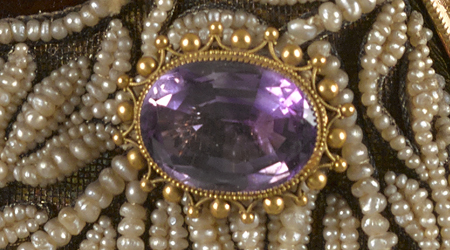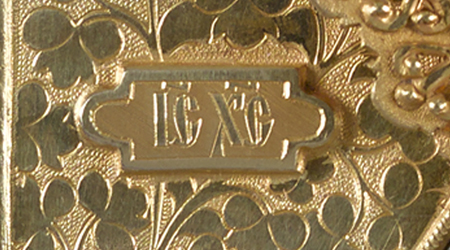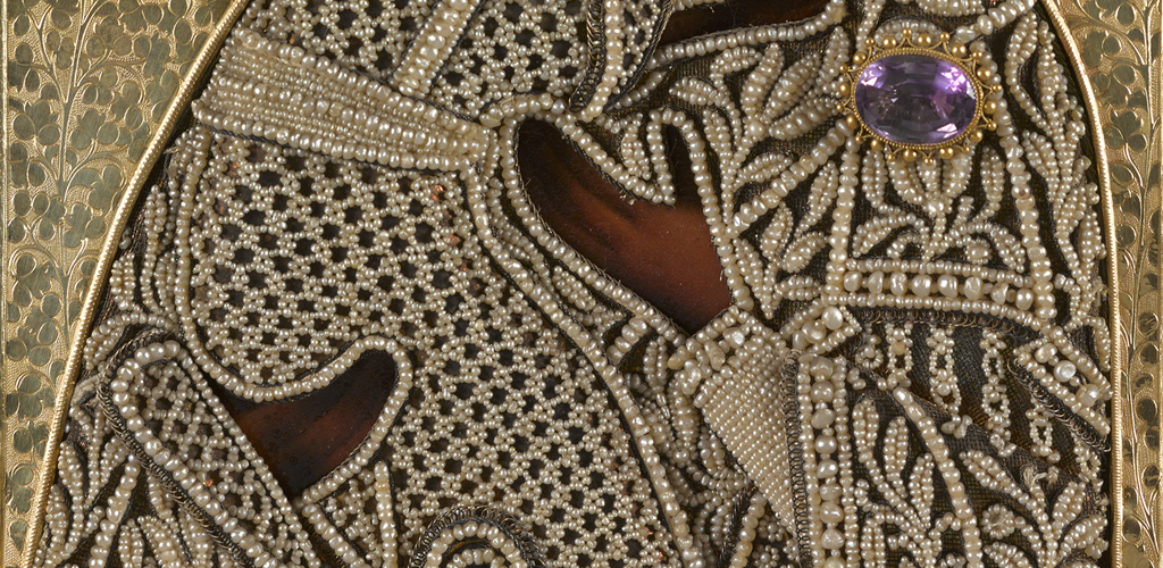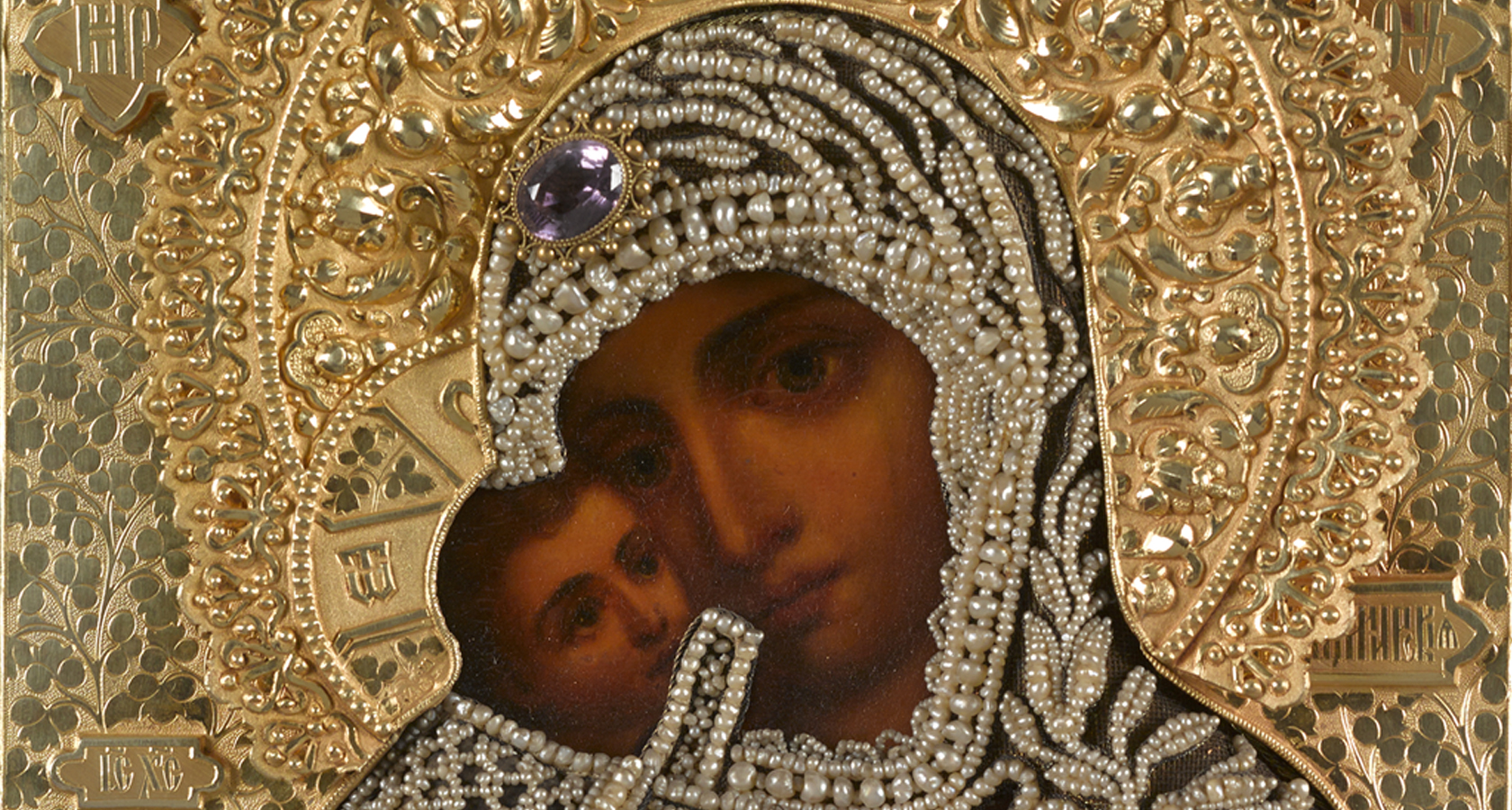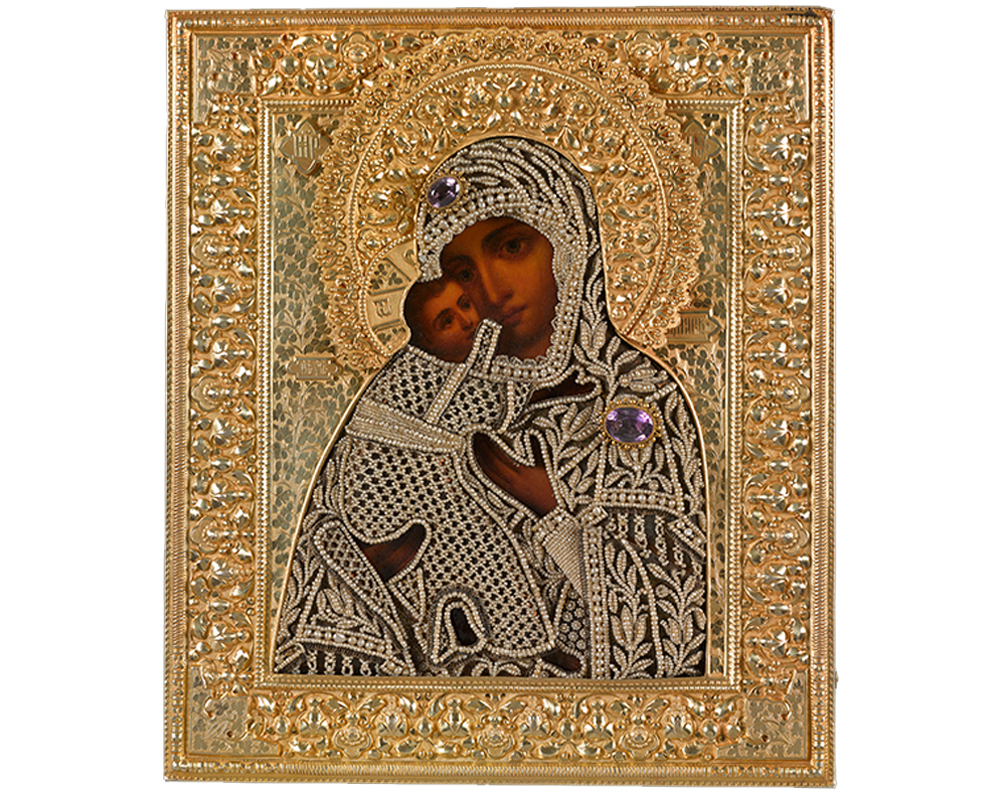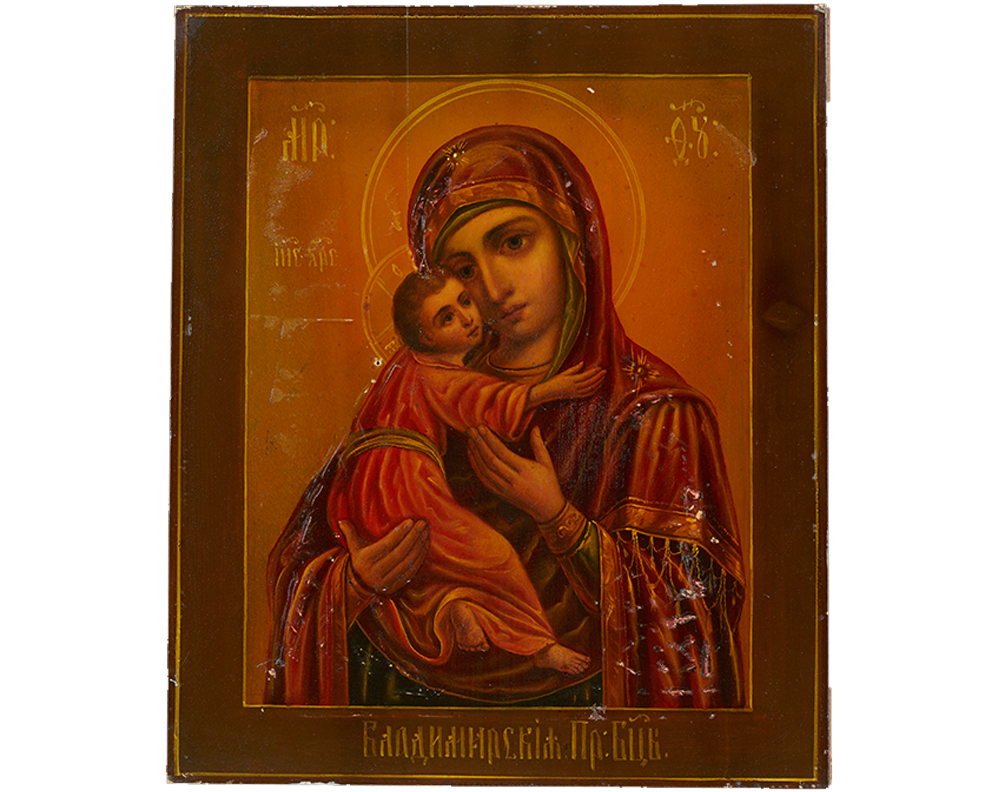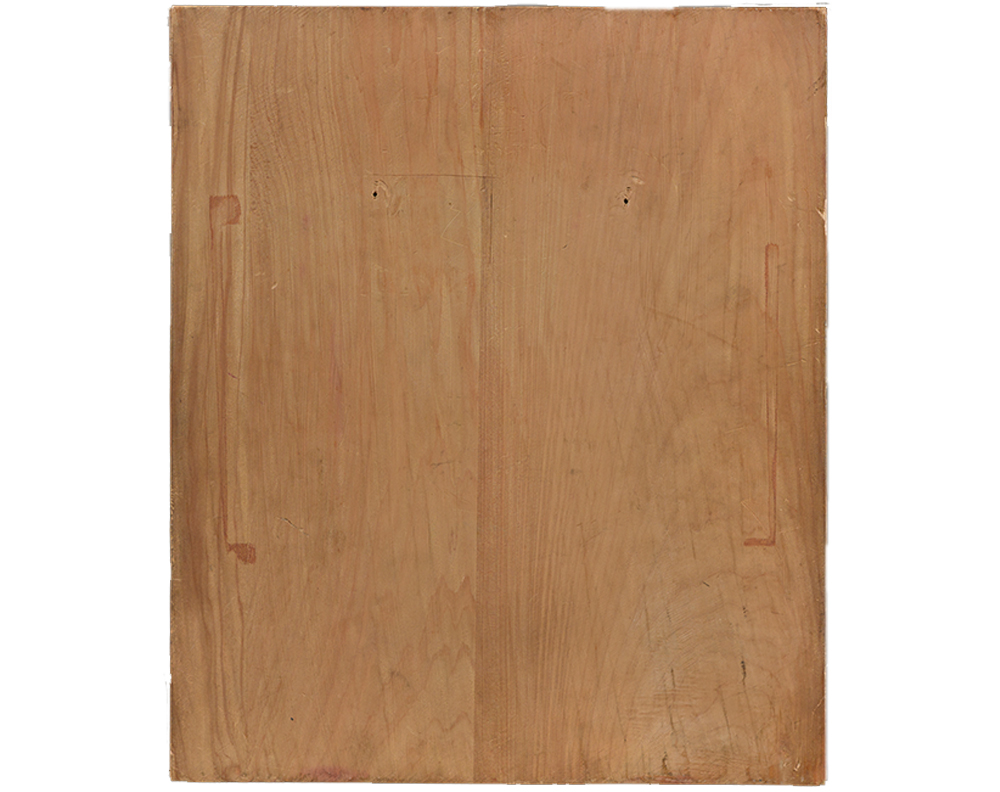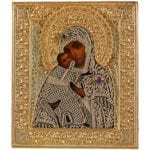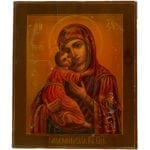Painted in the Western style the icon is encased in a silver-gilt oklad with an applied halo, repoussé with foliate scrolls. The vestments of the figures are ornamented with seed-pearls and two large amethysts. The Mother of God is represented half-length, with the Christ Child seated on her right arm tenderly embracing her neck with both his hands. Greek inscriptions on the background read: MP ΘΥ (Μήτηρ Θεοῦ, Mother of God), and IC-XC (Ἰησοῦς Χριστός, Jesus Christ). The lower border is inscribed in Cyrillic: The Most Holy Mother of God of Vladimir.
The Vladimir Mother of God is one of the most venerated and widespread images of the Virgin. The iconographic type, also known as Umilyenie in Russian, and Glykophilousa (She who embraces gently) or Eleousa (She who shows mercy) in Greek, is ultimately derived from the Mother of God Hodegetria. The original icon was brought from Constantinople in 1131 and taken to the city of Vladimir on the river Klyazma in 1155, hence its name. In 1395 the icon was moved to Moscow to protect the city from Tamerlane (the final battle against the Russian troops). The icon was then installed in the Uspensky Cathedral (The Dormition of the Virgin Cathedral) in the Moscow Kremlin where it stayed for centuries later to be moved to the Tretyakov Gallery in Moscow. A great number of replicas of the icon were subsequently produced all over Russia, occasionally with slight variations in their traditional iconography.
